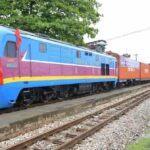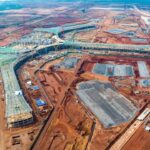According to Directive No. 03 dated February 4, 2025, the Prime Minister requested a focus on finalizing the draft National Assembly resolution on policies and investment for the standard-gauge Laos – Hanoi – Hai Phong railway project. The resolution is to be presented at the 9th extraordinary session, taking place from February 12 to 18, with the aim of completing procedures and commencing construction on the project in 2025.
The $8 billion project will span across 9 provinces and cities
Research indicates that by 2050, the total transport demand on the Laos – Hanoi – Hai Phong economic corridor will reach approximately 397.1 million tons of cargo and 334.2 million passengers. Of this, the railway transport system is expected to account for about 25.6 million tons of cargo and 18.6 million passengers.
However, the existing 1,000 mm gauge railway has small curve radii, large gradients, and an average operating speed of just 50 km/h. It is not suitable for intermodal transport, has low competitiveness, and can only handle about 4.1 million tons of cargo and 3.8 million passengers. As a result, it currently only serves short-haul tourists and transports some goods and industrial raw materials.
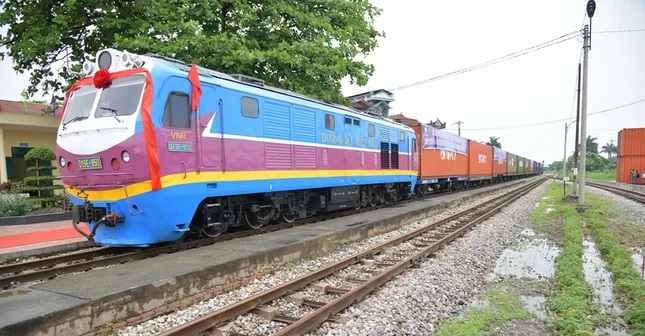
The Laos – Hanoi – Hai Phong railway project will help restructure the transport market share and contribute to achieving net-zero emissions by 2050. Illustration: Viet Hung.
|
The pre-feasibility study report for the Laos – Hanoi – Hai Phong railway line, proposed by the consulting consortium led by the Transport Engineering Design and Construction Consultancy Joint Stock Corporation (TEDI), suggests a total length of over 403 km for the railway line (with the main line spanning over 388 km and two branch lines of 15 km each).
The preliminary total investment for the project is estimated at nearly VND 195,000 billion (equivalent to over $8 billion). It will pass through the territories of 9 provinces and cities, including: Laos Cai, Yen Bai, Phu Tho, Vinh Phuc, Hanoi, Bac Ninh, Hung Yen, Hai Duong, and Hai Phong.
The starting point of the project will be at the connecting point of the cross-border rail between the new Laos Cai station and the Ha Khau Bac station (China), located in Laos Cai city. The endpoint will be at the Lach Huyen port in Hai Phong.
The railway will be designed for a speed of 160 km/h on the main section from Laos Cai station to Lach Huyen port station, 80 km/h on the branch sections, and 120 km/h for the section passing through Hanoi and overlapping with the eastern ring railway.
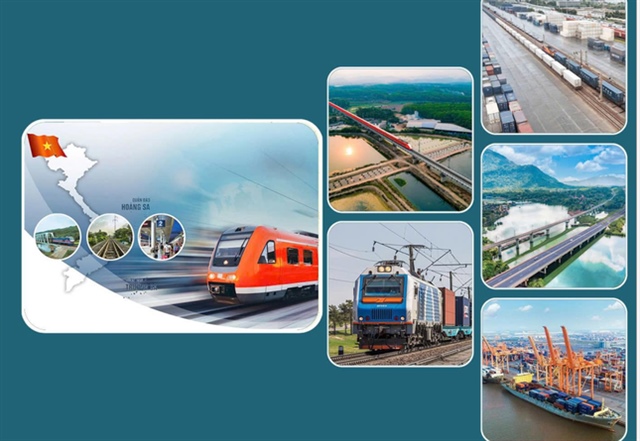
The preliminary total investment for the Laos – Hanoi – Hai Phong railway project is nearly VND 195,000 billion (equivalent to over $8 billion). It will pass through the territories of 9 provinces and cities. Image: TEDI. |
To ensure efficiency, the Management Board plans to divide the project investment into two phases. Phase 1, from now until 2030, will involve the construction of the entire Laos – Hanoi – Hai Phong line as a single-track line, with complete land clearance. Phase 2, after 2050, will see the completion of the entire line as a double-track line and the construction of the Nam Hai Phong – Nam Dinh Vu branch line.
The entire line is expected to accommodate 16 stations, including 3 train assembly stations (Laos Cai, Yen Thuong, and Nam Hai Phong) and 13 mixed-use stations (Bao Thang, Yen Bai New, Phu Tho New, Viet Tri New, Vinh Phuc, Binh Xuyen, Bac Hong, Dong Anh, Dai Dong, Binh Giang, Nam Hai Duong, Lach Huyen Port, and Dinh Vu). The distance between stations will be greater than 8 km for single-track operation and greater than 15 km for double-track operation. Additionally, 14 technical operation stations will be arranged to facilitate train operations.
A significant turning point for the mechanical industry and the job market
TEDI asserts that according to the railway network plan, in addition to the Laos – Hanoi – Hai Phong railway project, approximately 1,953 km of standard-gauge railways need to be constructed in the coming time. This will create a stable and long-term market for the implementation of projects in the following phases. Therefore, along with the high-speed railway project on the North-South axis, the Laos – Hanoi – Hai Phong railway will pave the way for the development of the railway industry and its supporting industries.
Notably, for this project, the type of vehicles and equipment is suitable for technology transfer to Vietnam, enabling the investment in machinery and equipment production, as well as the manufacturing of locomotives and carriages for the national railway system with speeds of less than 200 km/h. It also allows for the purchase of designs and production for urban railways.
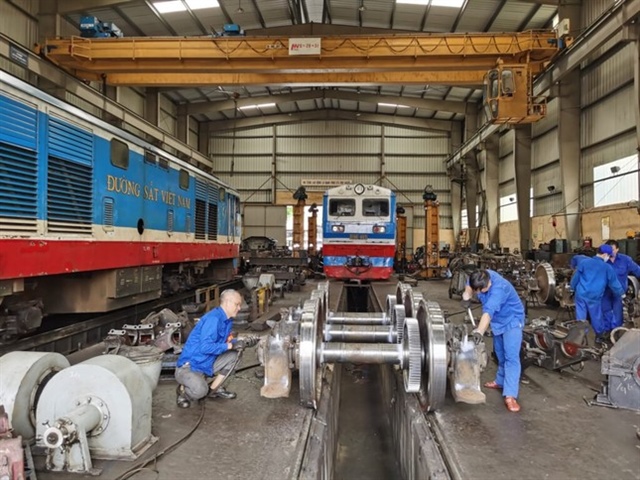 The Laos – Hanoi – Hai Phong railway project will mark a significant turning point for Vietnam’s mechanical industry and job market. Illustration: VNR. |
“The Vietnam Railway Corporation will select suitable foreign and domestic partners to implement the project,” said a representative from TEDI. “So far, a memorandum of understanding has been signed with Dalian Locomotive & Rolling Stock Co., Ltd. If there is an agreement on cooperation with China and capital is available for investment in the factory and technology transfer, the Vietnam Railway Corporation can produce locomotives and carriages for the national railway system and urban railways. They can also research and gradually produce spare parts or replacements for high-speed railways.”
Moreover, the investment in the construction of the Laos – Hanoi – Hai Phong railway will generate a construction market worth approximately $4.4 billion, providing about 90,000 jobs during the construction period and around 2,500 long-term jobs during the operation and exploitation phase. If we consider the entire national and urban railway system, it will create a construction market worth about $98.2 billion and millions of jobs.
|
The expected implementation plan for the Laos – Hanoi – Hai Phong railway project includes: Submitting the investment proposal to the National Assembly for approval in February 2025; approving the investment project in Q3 2025; carrying out site clearance from Q3 2025; completing the technical design and selecting contractors for 1 construction package to commence the project by the end of 2025; finalizing the overall technical design for the entire project in 2026; and completing construction by 2030. |
Loc Lien
– 11:14 06/02/2025
What Solutions Will Drive Ho Chi Minh City’s Double-Digit Growth?
According to Ho Chi Minh City Party Committee Secretary Nguyen Van Nen, the city must achieve the target of double-digit growth and fulfill all 22 set indicators. This is an ambitious goal, but with the right conditions and a dedicated effort, it can be achieved.
The Ultimate Guide to the $8.3 Billion Railway Project: Unveiling the Secrets Behind the Massive China-Connected Venture
The proposed rail project, linking Lao Cai to Haiphong via Hanoi, boasts an impressive scope. With an approximate investment of 195 trillion VND (over 8 billion USD), this ambitious undertaking will traverse nine northern provinces, commencing at the newly constructed Lao Cai station, which interfaces with the Haokou station in China, and concluding at the Lach Huyen port in Haiphong.
Establishing a Council for Appraisal: Adjusting the First Phase of the Long Thanh Airport Project
Vice Prime Minister Tran Hong Ha has signed Decision No. 246/QD-TTg, dated February 5, 2025, to establish a State Appraisal Council for the adjustment of the investment project for the construction of the Long Thanh International Airport, Phase 1.




